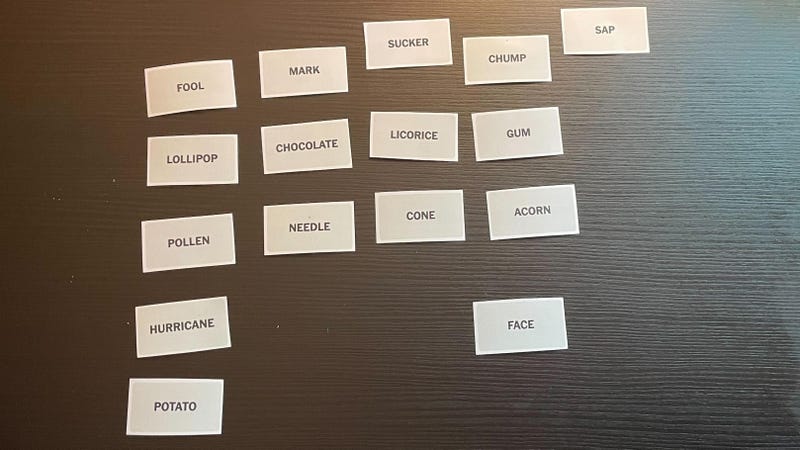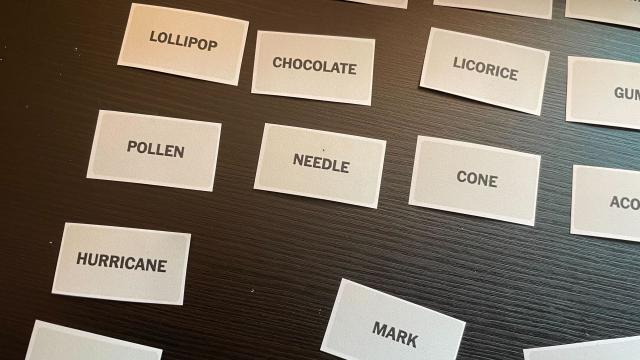When you’re playing the New York Times’s Connections game, it’s important not to submit your guesses too soon. You may think that you’ve spotted four candies, or four things found on trees, but the game is trying to trick you. One of those candies may be an ambiguous word, like SUCKER, that belongs in a different grouping.
The way I deal with this issue every morning (I write our Connections hints posts, if you hadn’t noticed) is to make sure I only submit a grouping if I’m pretty sure I’ve narrowed it down to four and only four words. If there are five words that could possibly fit, I need to figure out which of those words actually belongs somewhere else.
This means you often can’t confidently submit a grouping until you’ve figured out more than one grouping. In our SUCKER example from the other day, you might not be able to submit the candies (LOLLIPOP, CHOCOLATE, GUM, LICORICE) until you realize that SUCKER goes with CHUMP, FOOL, and MARK—and that SAP, in turn, belongs not with the fools but with parts of trees, like CONE and ACORN.

When I find the categories all entangled like this, I like to grab a piece of paper and jot down potential lists. Candies, fools, things that grow on trees. But then it’s easy to lose track of which words I haven’t written down; sometimes the stragglers form a group once you see them all next to each other. Hence my scissors-and-paper solution.
How to play NYT Connections on paper
That day, I found myself wishing I could rearrange the words in front of me, the way fiction writers sometimes shuffle index cards around to organize their plot points. And then I realized I could do exactly that with a pair of scissors.
Rather than printing the page directly—the formatting gets messed up—I took a screenshot and printed that. (If you don’t own a printer because you live in the future, you can just as easily handwrite the words on slips of paper.) I cut out the words with scissors, and began assembling my groups in rows.
This way, I could move a word to another row and see how the groups looked. I also had those oddball words next to each other at the bottom, where I could notice similarities more easily. I was stuck before I printed the puzzle; I solved it pretty easily once I had it in front of me.
My 7-year-old daughter likes to solve Connections with me on my phone. (I’ve always done the hints post by that point, so I help her, but try not to spoil it too much.) So I saved my little slips of paper, and asked if she’d like to do the day’s puzzle at the table. She was skeptical at first, but ended up enjoying the new way of solving. After each grouping, she asked me if she had gotten it right, and then moved those words to the top and colored them in with a crayon—just like the app does when you get a right answer.
Feel free to skip the coloring, but consider playing Connections on paper sometime. You can even save the words in a little baggie or envelope to share with others in the future.

Leave a Reply
You must be logged in to post a comment.